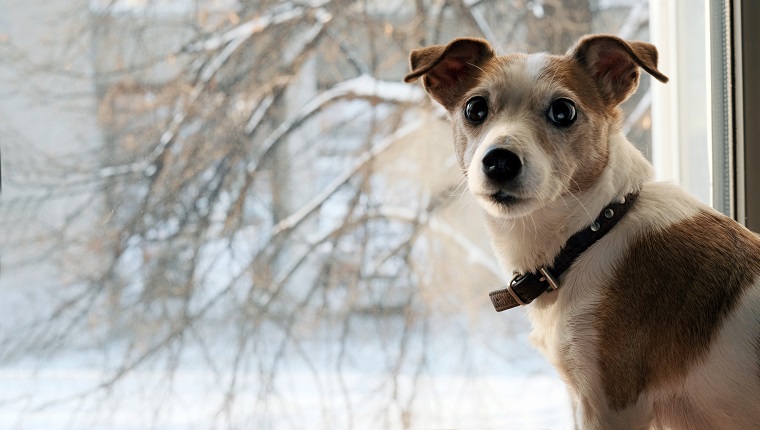When the winter months arrive, it’s time to stay safe and warm. This is especially important for our furry friends. While some dog breeds handle the winter weather better than others, you must still pay attention to how your dog is affected by the cold.
Pet parents must prepare themselves, their households, and their pets for cold winter weather to help keep their four-legged friends safe.
“Ensuring your pet has the correct bedding, coat, and general care will keep them comfortable throughout winter and reduce their risk of suffering from winter related illnesses, injuries, or diseases,” says PETstock Veterinarian Dr. Natalia Li.
Watch For Signs Of Winter Illness & Injury
Just like humans, dogs are more prone to sickness in the colder months. Canine infectious tracheobronchitis, or kennel cough, is an infectious respiratory illness. Symptoms may include a persistent cough, nasal discharge, sluggishness, loss of appetite, and fever.
Dogs mostly get kennel cough in places where a lot of animals spend time together, such as shelters, boarding facilities, and doggy daycares. Though it’s not foolproof, getting your dog vaccinated against kennel cough will help reduce symptoms of the illness.
Wet and cold conditions can also cause hypothermia in pets. This disorder results in many symptoms including lethargy, shivering, stiff muscles, stumbling, or a low heart rate. When exploring in wet weather, monitor your precious pooch closely for any of these symptoms.
Senior dogs are more likely to suffer the effects from the cold than younger dogs, and smaller dogs and dogs with shorter fur coats will feel the cold more sharply than larger dogs or breeds with thick coats. But, of course, even a young dog with a thick coat of fur still has ears, nose, a tail, and paws that are exposed.
Monitor your pet for signs of frostbite, especially in pets who haven’t previously experienced a colder climate. Signs include discoloration of the skin, swelling, blisters or ulcers, and pain when you touch the affected area.
Get The Right Items To Keep Your Dog Safe & Comfortable
As mentioned, smaller dogs and dogs with short fur coats are likely to feel the cold more acutely than dogs with thick fur coats. Older dogs are also more likely to suffer from the effects of the cold than younger dogs. But even young dogs with thick fur can still suffer from the cold!
It is highly recommended that you pack a sweater or coat for your pet, even if your dog is a fluffy breed, as generations of domestication may have reduced their ability to withstand the elements.
Before heading out to the snow, even fluffy dogs should wear snow boots to protect their paw pads from the cold. Boots can keep your dog’s paws safe from frostbite, antifreeze spills, and potentially dangerous chemicals used to melt ice.
Winter is also a good time to provide your dog with a warm, soft, elevated bed to keep them off the floor and out of drafts in cold weather.
PETstock’s Winter 2021 product range boasts an impressive array of coats, jackets, sweaters, bedding, grooming supplies and more to help keep your furry friend warm and safe during these cold months. PETstock, a 100 percent Australian, family owned and operated business, offers products for pet comfort, fashion, and safety in winter. Click here to shop PETstock for your dog’s winter needs!
Keep your furry friend safe, warm, healthy, and stylish all through the cold winter months!
How do you keep your dog safe in winter? Have you stocked up on any helpful items to get your pet through the season? Let us know in the comments below!










